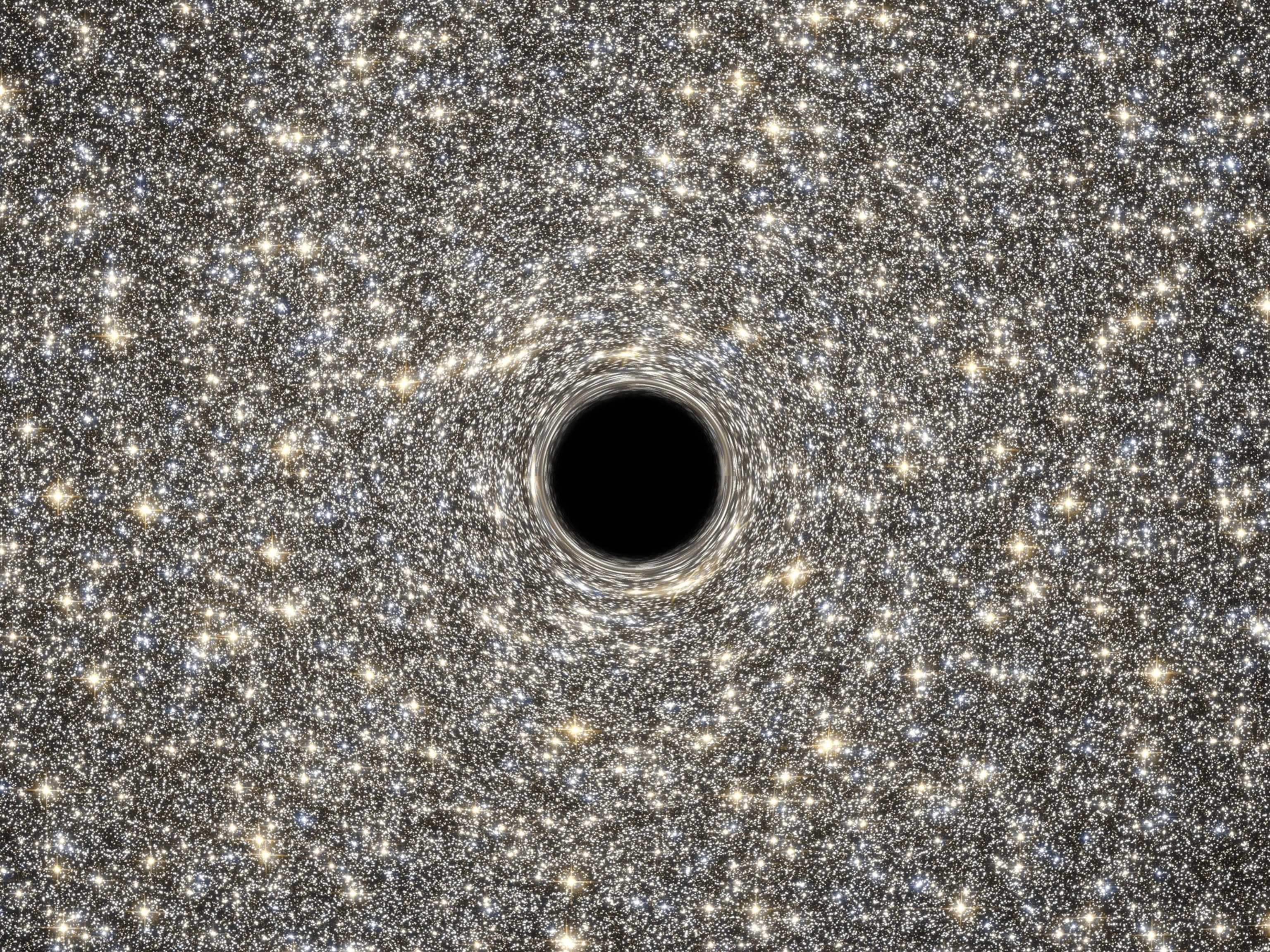
Brightest Galaxy Yet Shines With Light of 300 Trillion Suns
A gigantic quasar creates a beacon that can be seen across the cosmos.
Even in a cosmos that contains 100 billion galaxies or more, one of them has to be the brightest, and astronomers may have found a winner.
The newly identified galaxy, WISE J224607.57-052635.0, lurks at the very edge of the visible universe and shines with as much light as more than 300 trillion sunlike stars.
Starlight doesn’t cause most of the brightness from this faraway galaxy. Instead, the light almost certainly comes from a “monster quasar,” says co-discoverer Peter Eisenhardt, an astronomer at the NASA Jet Propulsion Laboratory (JPL). From Earth, a quasar can look like a star, but it is really a gigantic black hole that sits in a galaxy’s core and sucks in gas so voraciously that the stuff heats up to millions of degrees, creating a beacon that can be seen from across the universe.
The quasar in the newly found galaxy weighs ten billion times the mass of the sun, researchers report in the June issue of the Astrophysical Journal.
Monster Mysteries
The light from the giant quasar and everything else in the galaxy began the journey to Earth about 12.5 billion years ago, a little more than a billion years after the big bang. Astronomers don’t know how a black hole could grow so big so quickly. And this is not the first time they’ve been stumped by such a behemoth: An even larger and older black hole was identified just a few months ago.
“It’s part of this general puzzle we’re starting to see of black hole masses that seem to be too big too early,” Eisenhardt says. “This seems to be another case.”
That earlier quasar was spotted with some of the world’s largest ground-based telescopes. But spotting WISE J224607.57-052635.0 required NASA’s orbiting Wide-field Infrared Survey Explorer (WISE) telescope. That’s because most of the galaxy’s energy comes in the form of infrared, not visible, light.
“The quasar is hidden by clouds of dust,” says the study’s lead author Chao-Wei Tsai of JPL. When light from the quasar hits the dust, the dust emits infrared light. Tsai’s team calculated the size and the luminosity of the quasar based on the amount of infrared light detected by WISE.
Astronomers have a few ideas about how a black hole could grow to such a titanic size so quickly. It might have been gobbling gas at the maximum possible rate, known as the Eddington limit, for its entire lifetime, although that seems unlikely. It might have found a way to exceed that rate. Or the black hole might have been big from birth and gotten bigger. “If you want to grow an elephant,” says Eisenhardt, “the best way is to start with a baby elephant.”
It’s not clear, though, how a baby elephant-size black hole could have gotten its start.
There’s another mystery as well, says Harvard astrophysicist Avi Loeb, who was not involved in the research. “The mass of the largest black holes in the early universe,” he says, “is similar to the mass of the most massive black holes we find in the universe today.” So there’s not only the question of how early black holes got so big but also why those primordial giants never got much bigger.
No one, Loeb says, knows why that might be.





